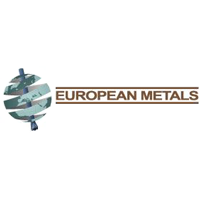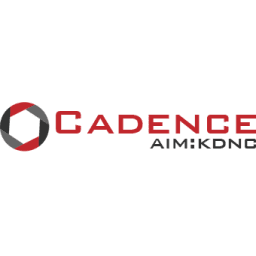European Metals LON:EMH Managing Director Keith Coughlan said about the drills “I am pleased to announce that we have started to drill the first of six drillholes planned at Cinovec South this year. The program will close two gaps in our newest block model, where ‘n’ blocks were established in the new block model due to paucity of data. Our geologic model suggests that this drilling program will convert the no-class blocks and a good part of the Inferred blocks into Indicated category, which will make them available for mine plan optimization. Based on geologic model, the no-class blocks are mostly in greisen and greisenized granite, which means we can expect higher Li and Sn grades. By adding high quality resource in areas of initial mining the economic model for Cinovec will be further optimised.”
European Metals Holdings Limited (ASX and AIM: EMH), has told DirectorsTalk that a a focused infill drilling program at Cinovec South has now started
* Six core drillholes for a total of 2,800m planned.
* Infill drilling in two areas where data density low
and 'gaps' in the resource model occur.
* Expected to add high grade resource at Cinovec South
in critical areas where mining will start.
* Results will be utilized during the DFS program to
optimize the current mine plan.
GEOLOGY
The most recent block model prepared by Widenbar and Associates for the PFS study contains three classes of resource. In addition to Indicated and Inferred Resource, a so called ‘no-class’ material is defined in two areas at Cinovec South. This forms ‘holes’, or ‘gaps’, within the Inferred resource, and is caused by paucity of analytical data at the increased resolution of the most recent resource model (see Figure 1). The ‘no-class’ material is located in parts of the deposits where greisen and greisenized granite are well developed, and flanked by high grade Li and Sn resource blocks (see Figure 2). The 2017 drill program, which just started, is designed with the view of converting the ‘no-class’ material to Indicated category, as well as to convert a great part of the Inferred Resource to the Indicated category, particularly in the eastern part of Cinovec South.
The current PFS mine plan utilises only the Indicated Resource. The conversion of the ‘no-class’ and Inferred Resource in the immediate vicinity of the current mine plan will allow optimisation of the mine plan, in particular with respect to early years of mining, thus positively impacting the overall cost structure.
(Please refer to the announcement on the European Metals Website for the graphic of Figure 1 – Plan view with projected resource blocks, EMH past and planned drill hole locations – www.europeanmet.com.)
(Please refer to the announcement on the European Metals Website for the graphic of Figure 2 – Section view of planned drillhole, filling a gap in resource blocks – www.europeanmet.com.)
BACKGROUND INFORMATION ON CINOVEC
PROJECT OVERVIEW
Cinovec Lithium/Tin Project
European Metals owns 100% of the Cinovec lithium-tin deposit in the Czech Republic. Cinovec is an historic mine incorporating a significant undeveloped lithium-tin resource with by-product potential including tungsten, rubidium, scandium, niobium and tantalum and potash. Cinovec hosts a globally significant hard rock lithium deposit with a total Indicated Mineral Resource of 348Mt @ 0.45% Li(2) O and 0.04% Sn and an Inferred Mineral Resource of 309Mt @ 0.39% Li(2) O and 0.04% Sn containing a combined 7.0 million tonnes Lithium Carbonate Equivalent and 263kt of tin.
This makes Cinovec the largest lithium deposit in Europe, the fourth largest non-brine deposit in the world and a globally significant tin resource.
The deposit has previously had over 400,000 tonnes of ore mined as a trial sub-level open stope underground mining operation.
The recently completed Preliminary Feasibility Study, conducted by specialist independent consultants, returned a post tax NPV of USD540m and an IRR of 21%. It confirmed the deposit is be amenable to bulk underground mining. Metallurgical test work has produced both battery grade lithium carbonate and high-grade tin concentrate at excellent recoveries. Cinovec is centrally located for European end-users and is well serviced by infrastructure, with a sealed road adjacent to the deposit, rail lines located 5 km north and 8 km south of the deposit and an active 22 kV transmission line running to the historic mine. As the deposit lies in an active mining region, it has strong community support.
The economic viability of Cinovec has been enhanced by the recent strong increase in demand for lithium globally, and within Europe specifically.


